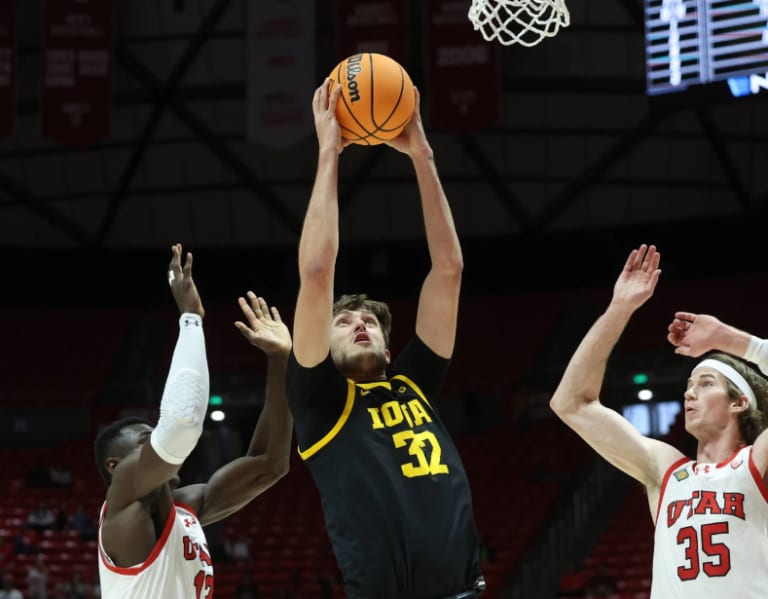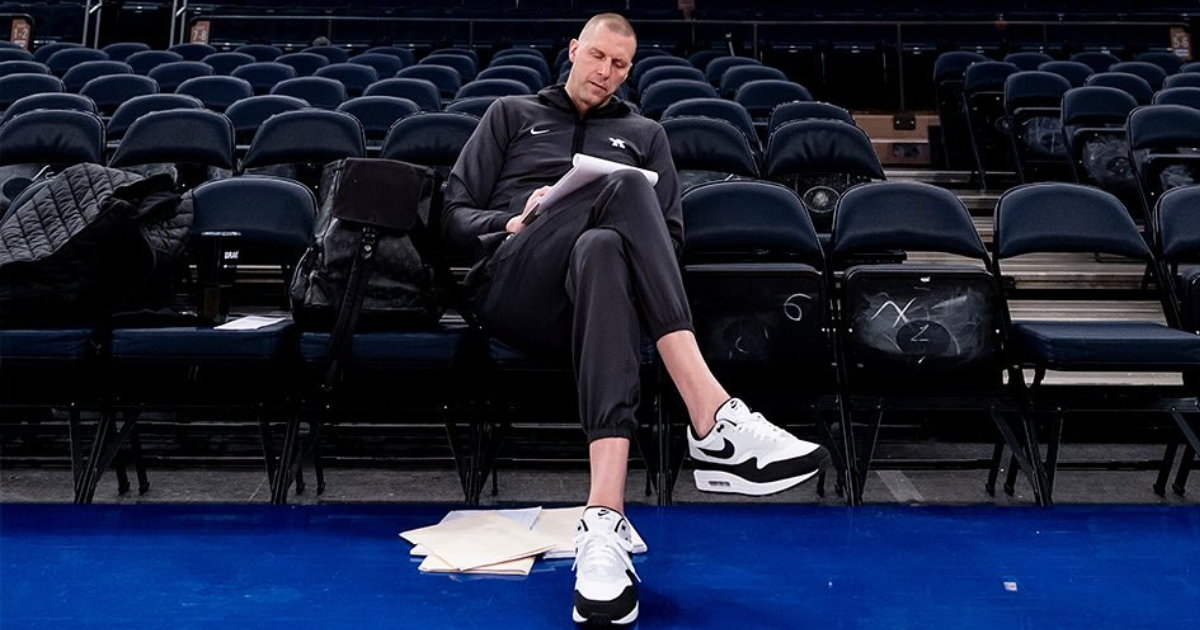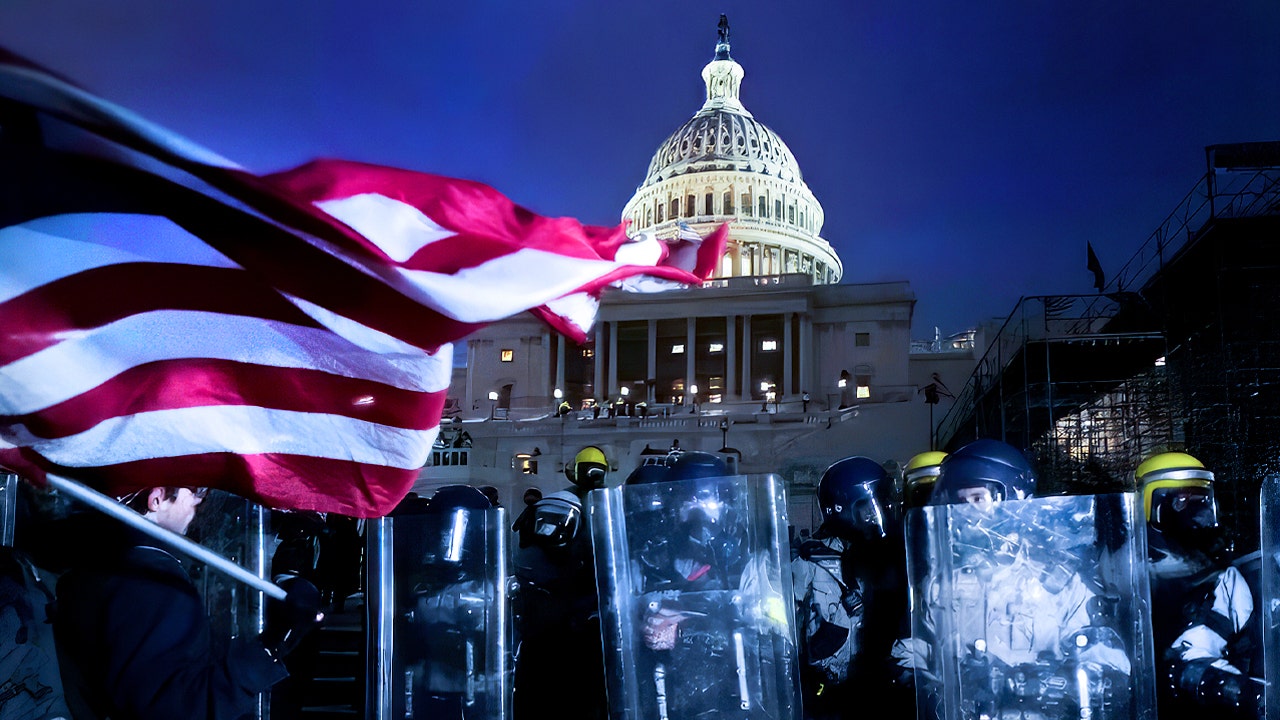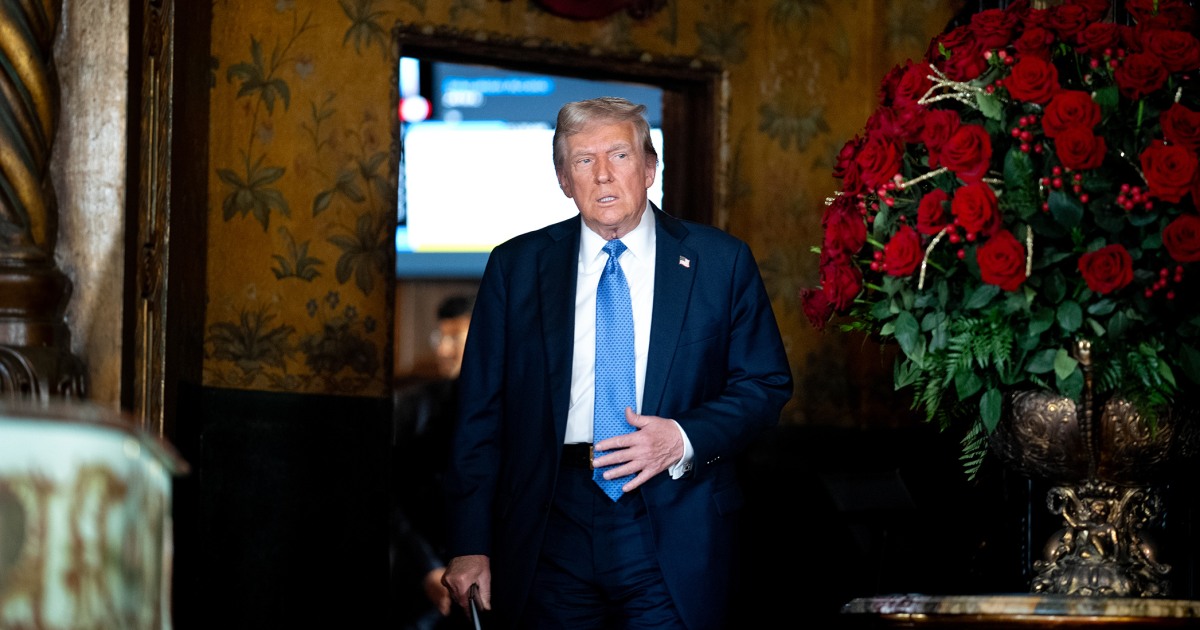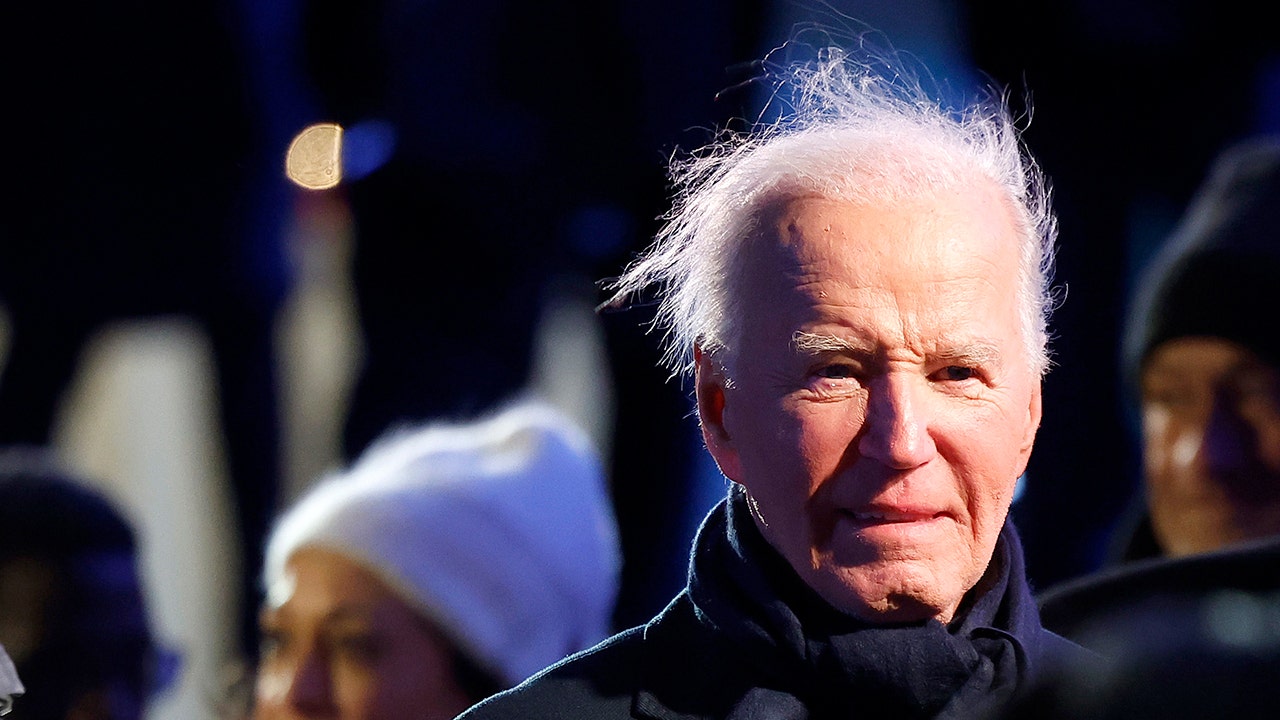Lifestyle
Actor and beloved baritone James Earl Jones dies at 93

James Earl Jones, pictured here in 2014, followed in the footsteps of actors like Sidney Poitier, Paul Robeson and Canada Lee, all of whom refused to be limited by stereotypical roles.
Jesse Dittmar for The Washington Post/Getty Images
hide caption
toggle caption
Jesse Dittmar for The Washington Post/Getty Images

James Earl Jones, pictured here in 2014, followed in the footsteps of actors like Sidney Poitier, Paul Robeson and Canada Lee, all of whom refused to be limited by stereotypical roles.
Jesse Dittmar for The Washington Post/Getty Images
One of America’s most beloved actors, James Earl Jones, died Monday at age 93. He was at home in Dutchess County, N.Y. surrounded by his family, his longtime agent Barry McPherson confirmed to NPR.
In addition to an illustrious stage career — which included roles in classics like Macbeth, Othello and The Iceman Cometh — Jones also had an extensive film career, appearing in Dr. Strangelove, Field of Dreams, and The Hunt for Red October. He voiced Mufasa in The Lion King, and as Darth Vader, he delivered the line that still sends shivers up the spines of Star Wars fans: “I am your father.”
James Earl Jones was born on Jan. 17, 1931, in Arkabutla, Miss. He was raised by his grandparents. When he was 5 years old, the family moved to a rural farm in Dublin, Mich. Jones said the move so traumatized him that he developed a severe stutter that continued until he was in high school.
“I was able to function as a farm kid, doing all those chores where you call animals,” he told WHYY’s Fresh Air in 1993, “and I certainly let the family know what my needs were. But when strangers came to the house, the mute happened. I didn’t want to confront them and I wasn’t ready. I hid in a state of muteness.”
Then a high school teacher found a way to help: “He one day discovered that I wrote poetry and he said to me, ‘This poem is so good I can’t believe you wrote it. The way you can prove it to me is to get up in front of the class and recite it by heart.’ And I accepted the challenge and did it, and we both realized we had a means — we had a way of regaining the power of speech through poetry.”
And what a power it was. Jones’ baritone came complete with its own echo chamber. His voice became one of the most instantly recognizable in entertainment history.
Everything about him was big: his commanding stage presence, the intensity of his glance and his brilliance at his chosen craft. Woodie King Jr. is founder of New York’s New Federal Theater, which has been producing shows by and about African-Americans throughout its history. He first became aware of Jones in the early 1960s.

“I was a young aspiring actor who had come into New York and he had all the elements of acting — physicality, vocal range, psychically in tune with what was going on,” King says. “And I wanted to be that kind of artist who had that kind of freedom with his instrument.”
King saw Jones’ critically acclaimed performance in a 1961 production of Jean Genet’s The Blacks. He also worked with Jones in a 1968 Broadway production of Howard Sackler’s The Great White Hope, based on the life of champion black boxer Jack Johnson.
“It was an unbelievable kind of performance,” King recalled. “It was an amazing metamorphosis, watching him transform himself into this vicious boxer.”
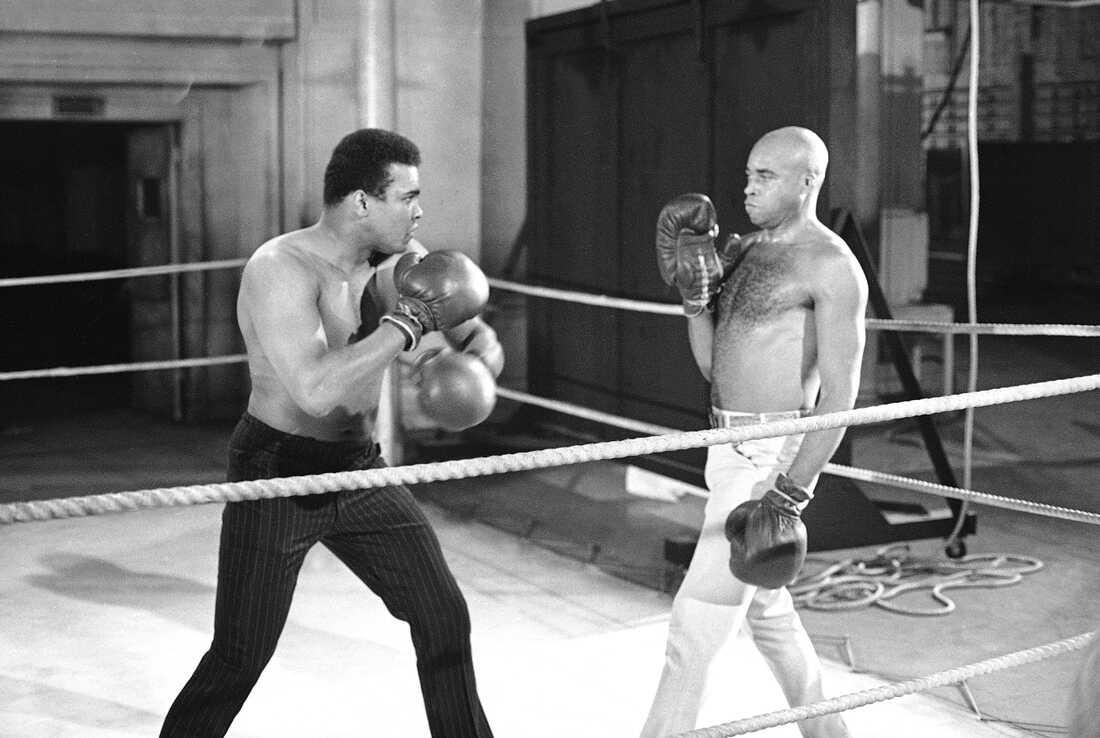
Muhammad Ali, (left) spars with Jones, then the star of The Great White Hope, in 1969.
GB/AP
hide caption
toggle caption
GB/AP

Muhammad Ali, (left) spars with Jones, then the star of The Great White Hope, in 1969.
GB/AP
Jones won a Tony for that role, as well as an Oscar nomination for the 1970 film adaptation, and he won a second Tony in 1987 for his role in August Wilson’s Fences.
His first film role was as bombardier Lothar Zogg in Stanley Kubrick’s 1964 classic Dr. Strangelove. In 1972’s The Man, Jones played the first black president; in the 1974 black classic Claudine, he played a garbage man who charms a date out of a welfare mom; and in 1989’s Field of Dreams, he explained why people would care about a baseball diamond in an Iowa cornfield. Jones has said that one of his favorite roles was that of the South African reverend in Cry, the Beloved Country.
Jones’ voice has pervaded pop culture: He’s the voice of CNN and Verizon, and even showed up on a few episodes of The Simpsons, which managed to kid the actor about his kaleidoscopic work in one fell swoop.
In his conversation with Fresh Air, Jones remembered the beginning of his voice-over career with amusement. “I think the first commercials I did … they asked me to ‘just give us the sound of God.’ … They were not embarrassed about saying that.”

Jones takes a bow after his final performance in Broadway’s You Can’t Take It With You in 2015.
Grant Lamos IV/Getty Images
hide caption
toggle caption
Grant Lamos IV/Getty Images
New Federal Theater’s Woodie King said Jones was a warm, somewhat shy man who was a powerful artist. He followed in the footsteps of actors like Sidney Poitier, Paul Robeson and Canada Lee, all of whom refused to be limited by the old stereotypical roles of butlers or buffoons. Jones saw theater as a place for all people.
“What you have is a master craftsman at work,” King said. “He makes young people aware of the vast possibilities of this business when you are a craftsman. … The Broadway stage sees him as really colorless — not black or white, but a brilliant artist.”

Lifestyle
The jury's in: You won't miss anything watching this movie from the couch

Nicholas Hoult (front row, center) plays Justin Kemp in Juror #2.
Warner Bros.
hide caption
toggle caption
Warner Bros.
There’s been a bit of consternation flying around about the fact that the theatrical release of Juror #2, directed by Clint Eastwood, was very muted. (It’s now on Max.) It has struck some people, particularly some Eastwood fans, as unfair to give short shrift to the 94-year-old director’s latest work.
But this is a movie that is perfect to watch at home. It belongs at home.
(Some mild early-plot spoilers follow, but they are not important to your enjoyment of the movie.)

The film has a terrific premise: Justin (Nicholas Hoult) gets called for jury duty, which he’s not excited about, since his wife is extremely pregnant and he’d rather just get out of it. But he can’t, and he ends up serving on a case where a man (Gabriel Basso) is accused of beating his girlfriend to death and leaving her by the side of the road after they had a drunken fight at a bar. But Justin quickly realizes that he was at the bar that night, and while he didn’t drink, he was upset. When he left, he took his eyes off the road and hit a deer — or so he thought. Now he wonders: Might he actually have hit this woman himself? And what is he supposed to do now?
The maneuvering that has to happen to make this even mildly plausible is impressive in its precision: He is a recovering alcoholic who went to a bar but didn’t drink, but his sponsor (Kiefer Sutherland) assures him that nobody will believe he was sober and he will rot in jail if he tells the truth. There are both a giant deer-crossing sign and a bridge at the exact point where the incident happened, so that when, in flashbacks, Justin gets out of the car to find out what he hit, he sees the sign, but might just miss the woman’s body, because it may have flown over the side of the bridge.

The legal plot, too, has so many holes in it that it’s more holes than plot itself. As the prosecutor (Toni Collette) prepares to bring the case, nobody thinks that maybe this woman found by the side of the road who left a bar in the dark in the rain was hit by a car, rather than beaten to death with a weapon — of which there’s no sign? (The case against the defendant, her boyfriend, amounts to “we don’t know what happened to her, so she was probably, what? Beaten to death? And it was probably you, since we don’t know anybody else who would have done it.”) Justin’s sponsor (who’s a lawyer!) doesn’t point out that it’s still entirely possible he did hit a deer, given that sign, and that proving otherwise would be a very tall order, especially after they put somebody else on trial?
Suffice it to say that this is a classic hum-through plot, meaning you have to hum loudly to yourself at the silly parts so that you don’t notice how silly they are. But that’s OK! That’s true of many perfectly serviceable courtroom dramas, which is what this is. I miss serviceable courtroom dramas. There should be more of them. And I’ve got nothing against this one, particularly. Clint Eastwood is an experienced and knowledgeable director; you’re not going to suddenly get a bad product. It’s fine!

But the serviceable courtroom drama is a genre that’s well-suited to being watched at home. They could have made this a mid-level Max streaming series, to be honest, dragging it out to six episodes or so, and that would have been fine, too. (Might have given J.K. Simmons, who has a strangely abbreviated role as a fellow juror, more to do.)
It would certainly be nice to see a healthier theater environment, where courtroom dramas could become hits like they could in the olden days (A Few Good Men was the tenth highest-grossing movie of 1993!) The same could be said of sports movies, romantic comedies, adult dramas – I mean, the rest of the domestic top ten of 1993 includes Jurassic Park, The Fugitive, The Firm, Sleepless in Seattle, Mrs. Doubtfire, Indecent Proposal, In the Line of Fire, Aladdin and Cliffhanger. This year’s domestic top 10 (thus far) is nine sequels and Wicked. That’s a bummer.

But that’s happening across the board. Clint Eastwood was not singled out for disrespect; the couch is just where people see regular movies now. And if viewing is going to shift toward home, this film, which is thoroughly and entirely OK, belongs there as much as any.
This piece also appeared in NPR’s Pop Culture Happy Hour newsletter. Sign up for the newsletter so you don’t miss the next one, plus get weekly recommendations about what’s making us happy.
Listen to Pop Culture Happy Hour on Apple Podcasts and Spotify.
Lifestyle
No turf wars, no sexism: Meet the queer Gen Z women giving billiards a rebrand in L.A.

In the summer of 2023, Alix Max, new to town with a cigarette in their mouth, was shooting pool on the patio of 4100 Bar in Silver Lake. They were pretty good, too — good enough to catch the eye of two regulars, Andrea Lorell and Julianne Fox, who recruited them to join their practice group. Their proposal was simple: “We have this group chat, and we play together and get better. The goal is to beat men at pool.”
It’s a plotline that could be lifted from the classic billiards film “The Hustler”: an up-and-coming pool prodigy, James Dean-cool, comes to town and gets seduced by the green-felted world of dive bar pool — an aspiring pool shark meet-cute over an ashtray. A cherished motto Max introduced to the group: “Pool is blue-collar golf.”
The pool night was born after Andrea Lorell, pictured, and other players kept experiencing hostility around the sport at other bars.
(Robert Gauthier / Los Angeles Times)
The pool-playing group, which started as a group chat titled “Women in STEM,” was composed of pool amateurs, usually young women Julianne “drunkenly met” at 4100 Bar who had a burgeoning interest in pool. Soon, the group chat mutated into a tournament series and community titled “Please Be Nice.” If billiards has the reputation of being a pastime for gamblers, hustlers and hanger-oners, the female-centric biweekly pool tournament at 4100 Bar offers a friendly, supportive alternative. “I don’t know if the goal necessarily was to build community, but it was a natural byproduct,” says Fox. The tournament is both a party and competition where women practice pool, trade tips and compete in an encouraging environment. It was created as an antidote to the prickly, male-dominated world of dive bar pool — all the exhilaration without the bickering turf wars with bar regulars.

Julianne Fox tallies the score.
(Robert Gauthier / Los Angeles Times)
The founders, Lorell and Fox, began shooting pool at 4100 Bar in April 2023 and were bonded by their mutual hunger for the game. Growing up as an only child, Lorell spent hours playing on her aunt’s pool table. As an adult, she traveled across the country for work, always seeking out pool halls to “find a good hang.” She’s since joined a league and even played in a tournament in Las Vegas, where her team won the Sportsmanship Award. The team that knocked her out was disqualified in the next round. On the patio, she details the melodrama so amusingly that her love for the game is infectious — almost romantic.

“It’s a community cheering for each other and seeing each other get good,” says co-founder Andrea Lorell.
(Robert Gauthier / Los Angeles Times)
Until recently, Lorell lived in a cluttered studio apartment with a pool table beside her bed. She jokes being a pool shark is her dream job. “I give myself a little pep talk before important matches: ‘You’re the greatest pool player in the world,’” she says, laughing with a cigarette in hand. For her, the intention of “Please Be Nice” is to make pool accessible to young women: “It’s a community cheering for each other and seeing each other get good. It expedites people’s learning.”
Julianne Fox, a co-founder, says the tournament also operates as a workshop: “If you’ve never shot a pool ball before, come through. We’ll metaphorically or literally hold your hand.” It’s not about showing up the boys, even if that still happens. “I think it’s even more fun to learn the game to play with your girls,” says Fox. “I want to win, but I also want my opponent to have fun,” she adds, emphasizing the competition’s good-natured energy.
Pool tables in Los Angeles can be hostile places. “I’ll walk into a random bar in Koreatown, and there’s a pool table, and a bunch of older men are playing. You walk in, and they assume you’ll be bad at it,” says Max.
Adds Lorell, “They’re either giving you tips or checking you out, so it’s uncomfortable.”

Players say there’s a good-natured energy at “Please Be Nice” tournaments.
(Robert Gauthier / Los Angeles Times)
Molly Sievert, another “Please Be Nice” player, has also experienced sexism while playing pool. She explains that people assume her interest in pool stems from wanting to impress a father or boyfriend. She began shooting pool at 21 in bars across cities and is still baffled by men’s casual condescension toward female pool players. ”Men have never complimented me on my defensive shots because they think it’s an accident,” she says. When they inevitably lose to Sievert, they toss it up to a bad beat rather than their opponent’s skillset. She won her first tournament at “Please Be Nice” and has been a frequent competitor ever since. She’s a proud critic of 4100 Bar regulars — she says people keep walking into her cue stick, throwing off her shots, and not apologizing. “I always have that little part of me that is like, would you do that to a man?”
Sievert explains a personal theory that women take naturally to pool. Above all, it’s a game of brokering one’s circumstances, calling one’s shot, and making one’s own luck. It’s the type of hazards and presentiment that feel inherent to womanhood. Bravado, Molly argues, doesn’t serve the game. “Men will say, ‘I can make shots. I’m a shot maker.’ Many women are like, ‘I like the side pockets and weird angles. I don’t like the long table shots. I don’t like hitting it real. I like to think about the interaction of all the balls.”
April Clark, a comedian and pool player, chalks up antagonism at pool tables in L.A. to a scarcity issue. “When I first got sucked into playing pool, I was living in New York City; there were so many bars with pool tables.” For Clark, the game’s appeal is the spontaneous encounters with strangers that pool invites. The fewer the tables, the worse the ecosystem, the worse the vibe, Clark argues.

Jaden Levinson, left, and Taylor Garcia watch the action.
(Robert Gauthier / Los Angeles Times)
It is often remarked that pool halls look like morgues; the dimly lit blue-felted table inside 4100 Bar is no exception. The competitors are in a trancelike state, building a stratagem. The pool tournaments often run till the bar closes at 2 a.m. The players take breaks to socialize, buy drinks and watch each other play.
Part of the success of “Please Be Nice” is tied to the recent renaissance of 4100 Bar, which transformed from a neighborhood dive into a Silver Lake nightlife institution thanks to TikTok. Mouse, a bartender at 4100 Bar for eight years, explains the bar’s rise began in 2020 when it became a popular spot for outdoor drinking during COVID restrictions.

Participants of all levels are welcome — even those who’ve never shot a pool ball before.
(Robert Gauthier / Los Angeles Times)
Now, it’s not unusual to have a run-in with a celebrity at 4100 Bar on a weekend with its new reputation as a charmingly sleazy playground for the internet-famous. Due to TikTok, the bar gained a cult following in Europe and Japan, with tourists flocking to the bar to be photographed in front of the avocado-green wall, Mouse explains. “Foreigners come here just to take photos with the 4100 sign and won’t even order,” he says. “People come and spend 100 bucks on the photo booth and not even get a drink.” The wall, he notes, closely resembled the now-infamous shade of neon green from Charli XCX’s “Brat” album.
For Lorell, the dive bar exists as a third space. “If you spend four out of seven days seeing the same people, you’re not just bar friends on that point; you’re chosen family.”

Diana Brennan sizes up the playing field.
(Robert Gauthier / Los Angeles Times)
Rumors swirl that 4100 Bar might close in the coming year with the expansion of Erewhon. “Over my dead body,” Fox exclaims.
For the future of “Please Be Nice,” Lorell and Fox hope the pool-loving community develops even further. “We would love to solidify a beginner-centric event since that’s where this all started, learning pool with women and nonbinary people who were too scared to try it at a normal bar,” says Fox. “We hope to continue to train up the troops and run every single table in L.A.,” she adds with a smirk.
There’s a beloved pool adage from “The Hustler,” spoken by the protagonist, Fast Eddie Felson: “Even if you beat me, I’m still the best.” Fox thinks the quote doesn’t align with her attitude toward pool. “There’s something Andrea says all the time when someone beats her, she says: ‘I don’t lose to losers. So you better win the whole thing.’”
Lifestyle
Is “The Godfather: Part II,” the perfect sequel? : Consider This from NPR

The “Kiss of Death” in “The Godfather: Part II”, directed by Francis Ford Coppola, based on the novel ‘The Godfather’ by Mario Puzo. Seen here from left, John Cazale (back to camera) as Fredo Corleone and Al Pacino as Don Michael Corleone.
Photo by CBS via Getty Images
hide caption
toggle caption
Photo by CBS via Getty Images

The “Kiss of Death” in “The Godfather: Part II”, directed by Francis Ford Coppola, based on the novel ‘The Godfather’ by Mario Puzo. Seen here from left, John Cazale (back to camera) as Fredo Corleone and Al Pacino as Don Michael Corleone.
Photo by CBS via Getty Images
Given the fact that it seems like Hollywood churns out nothing but sequels, you would think the industry would have perfected the genre by now.
Some sequels are pretty darn good, but many believe the perfect movie sequel came out 50 years ago this month.
Of course, we’re talking about Francis Ford Coppola’s The Godfather: Part II. It’s not only considered the greatest sequel of all time, it’s also considered one of the greatest movies of all time.
So why does Godfather II work, and where so many other sequels fall short?
NPR producer Marc Rivers weighs in.
For sponsor-free episodes of Consider This, sign up for Consider This+ via Apple Podcasts or at plus.npr.org.
Email us at considerthis@npr.org.
This episode was produced by Brianna Scott and Marc Rivers. It was edited by Courtney Dorning. Our executive producer is Sami Yenigun.
-

 Politics1 week ago
Politics1 week agoCanadian premier threatens to cut off energy imports to US if Trump imposes tariff on country
-
/cdn.vox-cdn.com/uploads/chorus_asset/file/25782636/247422_ChatGPT_anniversary_CVirginia.jpg)
/cdn.vox-cdn.com/uploads/chorus_asset/file/25782636/247422_ChatGPT_anniversary_CVirginia.jpg) Technology1 week ago
Technology1 week agoInside the launch — and future — of ChatGPT
-
/cdn.vox-cdn.com/uploads/chorus_asset/file/25789444/1258459915.jpg)
/cdn.vox-cdn.com/uploads/chorus_asset/file/25789444/1258459915.jpg) Technology1 week ago
Technology1 week agoOpenAI cofounder Ilya Sutskever says the way AI is built is about to change
-

 Politics1 week ago
Politics1 week agoU.S. Supreme Court will decide if oil industry may sue to block California's zero-emissions goal
-
/cdn.vox-cdn.com/uploads/chorus_asset/file/25546252/STK169_Mark_Zuckerburg_CVIRGINIA_D.jpg)
/cdn.vox-cdn.com/uploads/chorus_asset/file/25546252/STK169_Mark_Zuckerburg_CVIRGINIA_D.jpg) Technology1 week ago
Technology1 week agoMeta asks the US government to block OpenAI’s switch to a for-profit
-

 Politics1 week ago
Politics1 week agoConservative group debuts major ad buy in key senators' states as 'soft appeal' for Hegseth, Gabbard, Patel
-

 Business6 days ago
Business6 days agoFreddie Freeman's World Series walk-off grand slam baseball sells at auction for $1.56 million
-
/cdn.vox-cdn.com/uploads/chorus_asset/file/23951353/STK043_VRG_Illo_N_Barclay_3_Meta.jpg)
/cdn.vox-cdn.com/uploads/chorus_asset/file/23951353/STK043_VRG_Illo_N_Barclay_3_Meta.jpg) Technology6 days ago
Technology6 days agoMeta’s Instagram boss: who posted something matters more in the AI age
